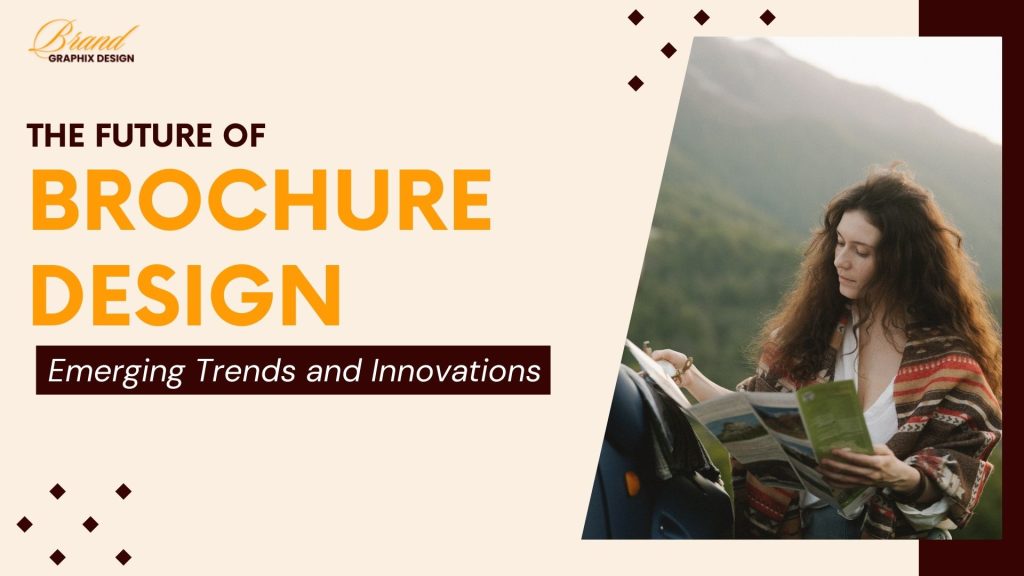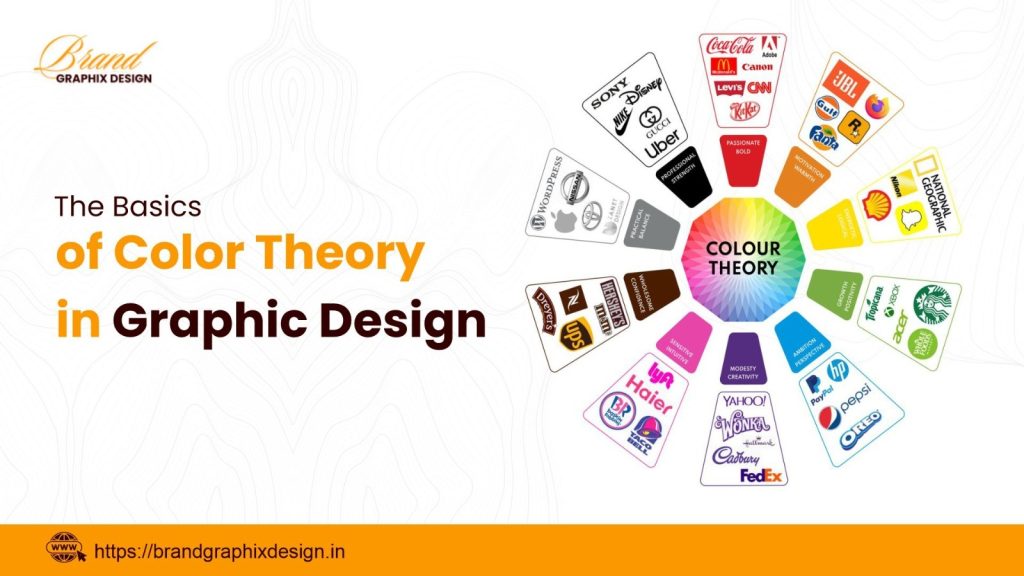Introduction
The world of brochure design is evolving rapidly with new trends and innovations. As businesses look for ways to stand out, brochures remain a powerful tool for communication. This blog explores the future of brochure design, highlighting emerging trends and innovations that can help your brand stay ahead of the curve.
Why Brochures Still Matter
Despite the digital age, brochures continue to be an important marketing tool. They provide a tangible way for businesses to share information and connect with their audience. Here are some reasons why brochures still matter:
- Tangible Connection: Brochures create a physical connection with your audience, making your message more memorable.
- Versatile: They can be used in various settings, such as trade shows, mail campaigns, and point-of-sale displays.
- Cost-Effective: Brochures are a cost-effective way to share detailed information about your products or services.
- Brand Identity: Well-designed brochures help reinforce your brand identity and professionalism.
Minimalist Design
One of the key trends in brochure design is minimalism. Minimalist designs focus on simplicity, using clean lines, ample white space, and a limited color palette. This approach ensures that the message is clear and not cluttered by unnecessary elements.
Here are some tips for creating a minimalist brochure design:
- Focus on Essentials: Include only the most important information to keep the design clean and focused.
- Use White Space: White space helps to separate different elements and makes the brochure more readable.
- Simple Typography: Use easy-to-read fonts and avoid using too many different fonts.
- Limited Color Palette: Stick to a limited color palette to create a cohesive and harmonious design.
Interactive Elements
Interactive elements are becoming more popular in brochure design. These elements engage the audience and create a memorable experience. Examples of interactive elements include QR codes, augmented reality (AR), and fold-out sections.
Here are some ways to incorporate interactive elements into your brochure:
- QR Codes: Add QR codes that link to videos, websites, or additional information.
- Augmented Reality (AR): Use AR to create an immersive experience where users can view 3D models or additional content through their smartphones.
- Fold-Out Sections: Include fold-out sections that reveal more information or create a unique layout.
Sustainable Design
As environmental awareness grows, sustainable design practices are becoming more important. Using eco-friendly materials and printing techniques not only benefits the environment but also enhances your brand’s reputation.
Here are some sustainable design practices to consider:
- Recycled Paper: Use recycled paper for your brochures to reduce environmental impact.
- Eco-Friendly Inks: Choose soy or vegetable-based inks instead of traditional petroleum-based inks.
- Minimalist Design: Minimalist designs use fewer resources and reduce waste.
- Local Printing: Work with local printers to reduce transportation emissions and support your local economy.
Bold Typography
Bold typography is a trend that continues to gain popularity. Using large, bold fonts can make your brochure stand out and grab the reader’s attention. It also helps to emphasize important information and create a strong visual hierarchy.
Here are some tips for using bold typography effectively:
- Choose the Right Font: Select a font that is both bold and easy to read.
- Emphasize Key Information: Use bold typography to highlight important points or calls to action.
- Balance Boldness: Balance bold typography with ample white space to avoid overwhelming the reader.
Custom Illustrations
Custom illustrations add a unique touch to your brochure and help convey your brand’s personality. Illustrations can simplify complex information, making it more accessible and engaging for the audience.
Here are some ways to use custom illustrations in your brochure design:
- Visual Storytelling: Use illustrations to tell a story or explain a concept.
- Brand Identity: Create illustrations that reflect your brand’s style and personality.
- Engage the Audience: Use engaging and colorful illustrations to capture the reader’s attention.
Geometric Shapes
Geometric shapes are becoming a popular design trend. They add a modern and dynamic look to your brochure. Using geometric shapes can help to structure your layout and draw attention to specific areas.
Here are some tips for using geometric shapes in your brochure design:
- Structure Layout: Use geometric shapes to create a structured and organized layout.
- Highlight Elements: Use shapes to highlight important information or sections.
- Combine with Minimalism: Pair geometric shapes with a minimalist design for a clean and modern look.
High-Quality Photography
High-quality photography can make a significant impact on your brochure design. Using professional images helps to create a polished and professional look. It also helps to convey your message more effectively and engage the audience.
Here are some tips for using high-quality photography in your brochure:
- Use Professional Photos: Invest in professional photography to ensure high-quality images.
- Relevant Images: Choose images that are relevant to your message and resonate with your audience.
- Consistency: Use a consistent style and color palette for your images to create a cohesive look.
Personalization
Personalization is a growing trend in brochure design. Personalized brochures create a more engaging and relevant experience for the reader. Using data and insights, you can create tailored content that speaks directly to your audience.
Here are some ways to personalize your brochures:
- Targeted Messaging: Use data to create targeted messages for different segments of your audience.
- Custom Content: Create custom content that addresses the specific needs and interests of your audience.
- Variable Data Printing: Use variable data printing to customize text and images for different recipients.
Augmented Reality (AR)
Augmented Reality (AR) is revolutionizing brochure design. AR allows you to create an interactive and immersive experience for the reader. By scanning a QR code or using an AR app, readers can view additional content, such as videos, 3D models, and interactive graphics.
Here are some ways to use AR in your brochure design:
- Interactive Content: Create interactive content that engages the reader and enhances their experience.
- 3D Models: Use 3D models to showcase your products in a more engaging way.
- Videos: Embed videos in your brochure to provide more information and context.
Digital Brochures
With the rise of digital media, digital brochures are becoming more popular. Digital brochures offer several advantages, including ease of distribution, interactivity, and cost savings. They can be shared via email, social media, or embedded on your website.
Here are some benefits of digital brochures:
- Easy Distribution: Share digital brochures easily through email, social media, or your website.
- Interactivity: Add interactive elements, such as videos, links, and animations.
- Cost Savings: Reduce printing and distribution costs.
- Analytics: Track engagement and gather insights through analytics tools.
Typography Trends
Typography plays a crucial role in brochure design. Emerging trends in typography are making brochures more engaging and readable. Some popular typography trends include bold fonts, handwritten fonts, and variable fonts.
Here are some typography trends to consider:
- Bold Fonts: Use bold fonts to create a strong visual impact and emphasize important information.
- Handwritten Fonts: Handwritten fonts add a personal touch and create a more approachable look.
- Variable Fonts: Variable fonts allow for greater flexibility in design, with adjustable weight, width, and style.
Storytelling
Storytelling is a powerful
tool in brochure design. By telling a compelling story, you can engage your audience and create an emotional connection. Use storytelling techniques to convey your brand’s message and values.
Here are some tips for incorporating storytelling into your brochure design:
- Engaging Narrative: Create an engaging narrative that captures the reader’s attention.
- Visual Storytelling: Use images and illustrations to support your story and make it more compelling.
- Clear Message: Ensure that your story conveys a clear message and aligns with your brand values.
Call to Action
Ready to innovate your brochure design? Contact us at +91 911 891 1171 for expert help. Click the link to text us on WhatsApp: https://wa.me/918881361111.
Conclusion
The future of brochure design is exciting, with emerging trends and innovations offering new ways to engage and connect with your audience. By embracing these trends, you can create brochures that are not only visually appealing but also effective in conveying your message. Remember, the key to successful brochure design is to keep it simple, focus on the essentials, and always put your audience first.
Whether you choose to incorporate minimalism, interactive elements, sustainable practices, or bold typography, the goal is to create a brochure that resonates with your audience and achieves your marketing objectives. Stay ahead of the curve by keeping up with the latest trends and continuously innovating your brochure design.
Contact Us
If you need help with creating innovative and effective brochures for your brand,
Contact us at +91 911 891 1171.
We are here to help you design brochures that stand out and drive results for your business.
Click the link to text us on WhatsApp: https://wa.me/918881361111.



